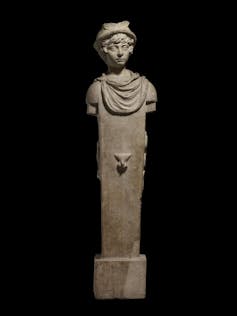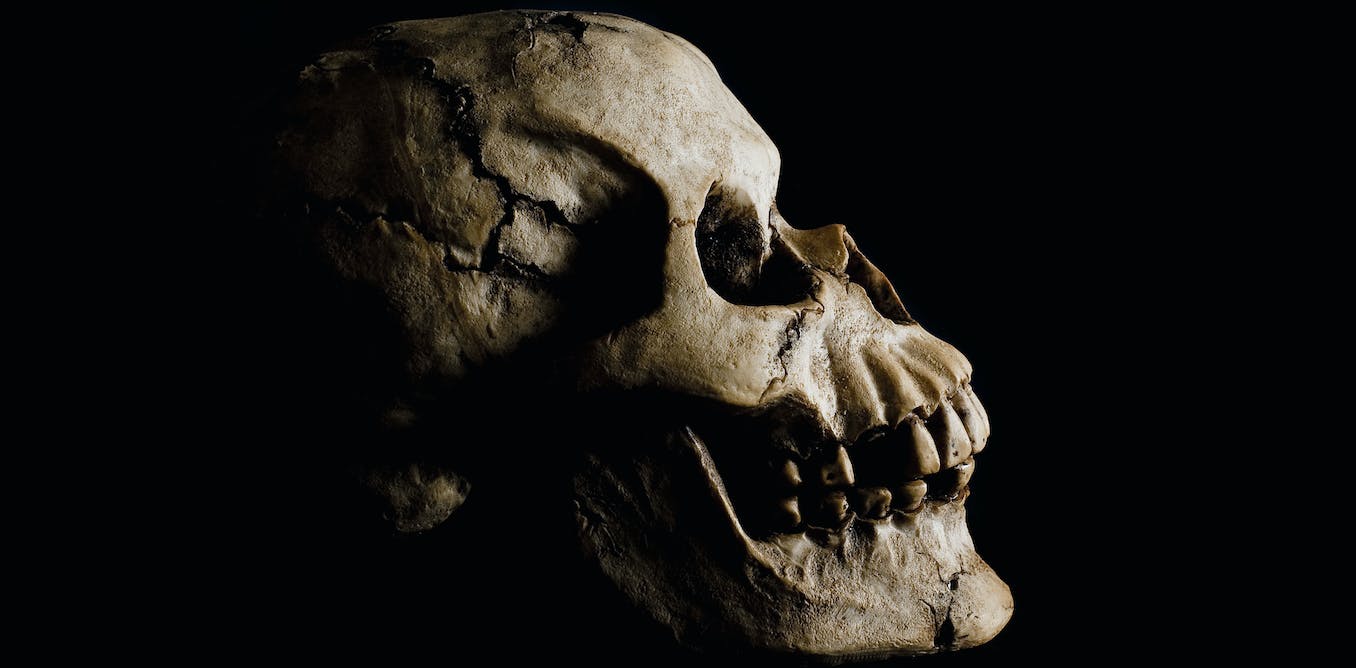In 1992, archaeologists excavating at the site of the Roman fort of Vindolanda on Hadrian’s Wall in Northumberland discovered what they thought was a darning tool. The artefact was subsequently ignored and as a result remained unresearched. Until now.
Recently, archaeologists Rob Collins of Newcastle University and Rob Sands of University College Dublin took another look at the artefact and had a shock. Upon examination, they came to a somewhat different interpretation, identifying it not as a darning tool, but as a phallus. And not just any phallus: to date, the only known life size wooden phallus to have survived intact from the Roman period.
Through my research into ancient prosthetics, I know that Roman shoemakers often moonlighted in a more daring trade. Could they have been behind this wooden tool, which looks to be an ancient Roman dildo?
Stone, metal, bone and ceramic phalluses are already widely known from other Roman sites. While phalluses made of organic materials such as wood and leather must have been equally popular during the Roman period, they would only survive in the archaeological record under certain environmental conditions – either very wet or very dry.
Vindolanda has the former and has for many years been astounding archaeologists with its treasures. These have ranged from wooden tablets bearing ancient private letters (including an invitation to a birthday party) to a pair of leather boxing gloves, to a wooden toilet seat.
The Vindolanda phallus, as it is now being called, was recovered from a deposit dating to the late second century CE and is extremely well preserved.
It is carved from ash wood and was probably whittled with a single tool by someone with a degree of woodcarving experience, since there is no evidence of mistakes made in the process. It is 16cm long but it may originally have been longer and larger, as wood is prone to shrinking and warping over time.
Pompeii’s House of the Vettii reopens: a reminder that Roman sexuality was far more complex than simply gay or straight
The phallus was a ubiquitous image in the Roman world. Where once phalluses were viewed very literally and thought to point the way to brothels, these days they are usually interpreted as being “apotropaic” – a means of protection and warding off bad luck. Consequently, there are several intriguing possibilities about how this Vindolanda phallus could have been used.
Theories on the wooden Roman phallus
Certainly, the artefact could have been used in a sexual context. However, it could equally have been used as a pestle along with a mortar in food or medicine preparation. If so, perhaps the phallic motif was believed to strengthen the properties of the ingredients.

The Trustees of the British Museum, CC BY-NC
Alternatively, it could have been slotted into a statue, such as a representation of the gods Priapus or Silvanus, or even just a herm (a sculpture with a head and squared lower section on which genitals may also be carved), either freestanding or mounted on a building, that people approached to touch or rub for good luck.
The lack of wear indicates that if it was slotted into a statue, that statue was indoors, not exposed to the Northumbrian elements that the soldiers stationed at Vindolanda frequently complained about in their correspondence.
The archaeologists who reexamined and re-identified the artefact lean more towards interpreting it as a pestle or a statue component than as a sex toy.
However, that the phallus was discovered in a ditch with dozens of shoes and clothing accessories and waste products such as off cuts of leather and pieces of worked antler, is fascinating. It adds weight to the theory that the phallus could have been a dildo.
Ancient artisans such as shoemakers could turn their hands to all manner of things and while many men’s, women’s and children’s shoes have been excavated at Vindolanda, there would have been plenty of time during the long, dark, Northern nights for shoemakers to indulge in side hustles.

Courtesy of The Vindolanda Trust
Just as we today like to equate foot size and penis size, in antiquity connections were frequently made between feet and phalluses. The poet Herodas describes two women named Coritto and Metro discussing Coritto’s newly acquired scarlet leather dildo, with Metro wanting to know where she can get one just like it and Coritto referring her to the local shoemaker, Cerdon.
In a subsequent instalment, Herodas describes Metro patronising Cerdon in order to make her dream a reality and Cerdon presenting her with an extensive catalogue of “shoes” to choose from. Perhaps the town outside the Vindolanda fort was home to an equally enterprising shoemaker.
Although the excavations at Vindolanda have been going on for decades, the site still has the capacity to surprise and amaze us with the access it gives us to the most intimate aspects of the lives of the Romans living there 2,000 years ago.



